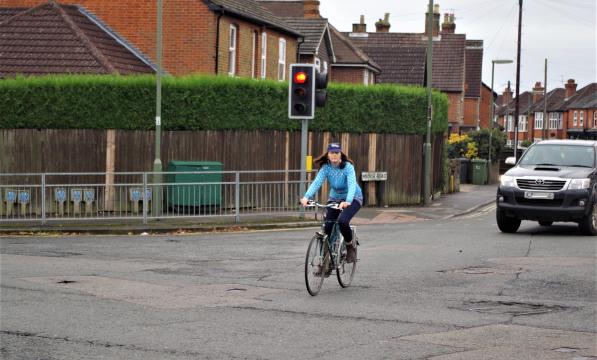Junctions and crossings

Headline message
- Training people how to negotiate junctions safely and confidently helps, but these locations need to be made more cycle-friendly in the first place.
Important!
Please note: in July 2020, the Department for Transport published new guidance on cycle infrastructure design (LTN1/20). We will be revising all our advice, policy and materials on infrastructure in the light of it as soon as possible. This exercise will include reviewing this page.
Please also note existing cycle infrastructure design guidance for London, Wales and Scotland (revision due). Plus, technical guidance for Local Cycling and Walking Infrastructure Plans (LCWIPs, England).
Policy Key Facts
Three-quarters of cyclists' collisions that are reported to the police happen at or near junctions, so providing cycle lanes or paths that stop short of one (or at it) doesn't help
Signalled junctions and roundabouts
- Signalled junctions are usually better than roundabouts, while special cycle phases and detectors can be particularly helpful.
- If there’s no avoiding a roundabout, it can be improved for cyclists by narrowing the circulatory carriageway, minimising the number of entry and exit lanes, and slowing drivers down by making the entry and exit angles tighter.
Shared-use pedestrian and cycle crossings
- Cyclists tend to prefer direct routes – and safe ones, of course. Consequently, they often want to cross a road, but not necessarily at a road traffic junction.
- Toucans (light controlled crossings shared with pedestrians) usually provide a very workable arrangement; and for very busy roads, high quality subways or bridges are not only often welcome to cyclists, but can also help connect communities severed by an otherwise impassable road.
Cycle path crossings of side roads
- Cyclists are rarely given priority over side roads and driveways that intersect a cycle path alongside a road - especially if the path is a pavement converted to shared use. This means that cyclists have often have to stop, look ahead, right, left and behind them (a complex manoevre for a novice) before proceeding. However, engineering measures exist to help make drivers more aware of cyclists at these points (e.g.raised tables over the crossing), and give priority to the cycle path.
Cycling UK view
We are currently revising and updating our detailed views on all aspects of cycling infrastructure and these will be published in due course. For general principles, please have a look at our 'overview' briefing on cycle-friendly design and planning.
The following is an extract from our Policy Handbook (March 2004):
- Special cycle phases should be incorporated at junctions.
- Signalled junctions are often preferable to roundabouts. However mini-roundabouts may be used as a speed control measure in traffic calming schemes and this may benefit cyclists.
- Increasing the entry deflection, narrowing the circulatory carriageway and providing circulatory lane markings can improve safety on roundabouts.
- Loop-detectors controlling traffic signals should be tuned to detect cyclists.
- All new schemes should be audited for cycle friendliness and as much of the existing transport network should be reviewed likewise.
- Subways and overbridges should be of high quality with good sightlines, sensible gradients, lighting and sufficient width. Converted footways are generally disliked by pedestrians and cyclists and should be avoided by transport planners. Low cost schemes to convert existing subways into shared use facilities are rarely satisfactory. Overbridges should be cycle-friendly and not have steps.
- Toucan crossings are shared light controlled crossings. They allow cyclists and pedestrians to cross roads in safety, and are a good example of workable and cost effective facilities.
2012-03-30 00:00:00 Europe/London


